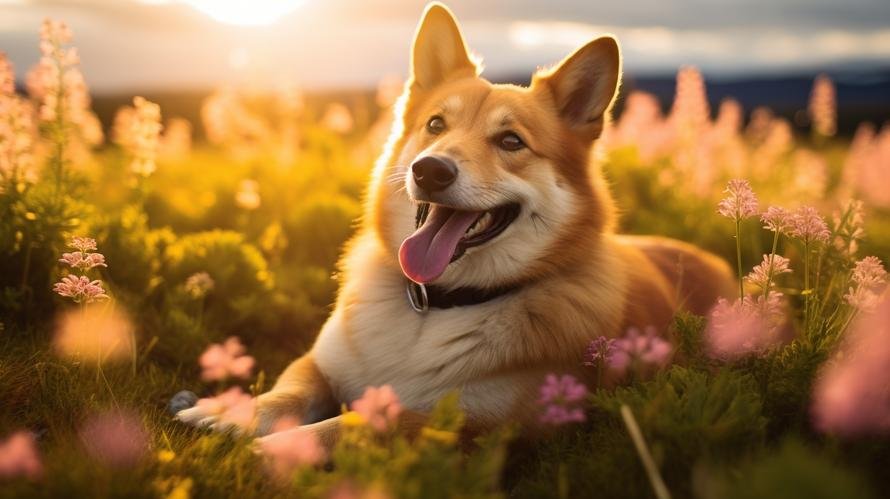Imagine a dog with more toes than you’d expect, ears that can close at will, and a neck that can crane like an owl’s. You’re picturing the Norwegian Lundehund, a breed so quirky and fascinating, it’s hard not to be intrigued. Is this the guard dog of the future you’ve been looking for? By the end of our exploration into the world of the Norwegian Lundehund, you’ll have your answer, along with a heap of captivating tales about this canine oddity.
Let’s dive into the distinctive characteristics of the Norwegian Lundehund. Originating from the remote and rugged coastlines of Norway, this dog was bred to do something no other could – hunt Puffins on steep vertical cliffs and in narrow crevices. Natural selection gifted the Lundehund with six toes on each foot, equipped with thick, rough pads, helping them to master the art of scaling and gripping. Their exceptional joint flexibility, including a neck that can tip back to touch the spine, and agile shoulders that allow the front legs to stretch out flat, made them a puffin-catching aficionado.
You might ask, does such a specialized skill set qualify the Norwegian Lundehund as a guard dog? Traditionally, guard dogs possess a strong instinct to protect, a sizable and intimidating presence, and a demeanor that oscillates between aloof and aggressive with strangers. Now, let’s consider the Lundehund. Weighing in at around 20 to 30 pounds, this breed is a far cry from the prototypical guard dog. Their friendly and jovial nature means they’re more likely to wag their tail than brandish their teeth when someone approaches.
Here’s where the plot thickens: despite their size and social disposition, Norwegian Lundehunds are not without their defenses. They possess a piercing bark that can serve as an alert system. However, if you’re seeking a breed that will physically confront an intruder, the Lundehund might be the canine equivalent of bringing a humorous court jester to a knight’s duel.
Lundehunds are known for their boundless energy and clever problem-solving talents. These traits are where this breed’s charm truly lies. They’re curious and playful, which could lead to unexpected and entertaining distractions, not necessarily deterring trespassers but perhaps befuddling them.
The Norwegian Lundehund’s strong suit, when it comes to security, lies in their vigilance. Their keen senses and alert posture mean they’re often the first to know when something’s amiss. Their reaction? Well, it’s probably not going to be the intimidating display you might find in a German Shepherd or a Rottweiler. When a Lundehund senses danger, their instinct is to sound the alarm rather than jump into a fray.
So, if you’re considering adopting a Lundehund as your personal home security system, you might want to reconsider. Instead, perhaps focus on the unique companionship and history they offer. If, however, you still desire a hint of guard dog capability, consider their role as a ‘lookout’. They’ll let you know when something is out of the ordinary, allowing you to investigate further with perhaps a more physically imposing helper by your side.
In your journey to find the ideal guard dog, there are breeds that are tailor-made for the job. Options include the vigilant Doberman Pinscher, the protective Bullmastiff, or the noble Giant Schnauzer. These breeds not only fit the physical criteria but also exhibit the behavioral traits desirable in a guard dog, like territorial instinct and a natural suspicion of strangers.
Now, if your heart is still set on bringing a Norwegian Lundehund into your home, let’s equip you with some advice to harmoniously integrate this peculiar pup into your life. First, start with early socialization. The Lundehund’s good-natured temperament is a treasure that should be nurtured. Introduce your puppy to a variety of people and settings to encourage their inherently sociable attitude.
Next, consistent training is key. Given their smarts, a Norwegian Lundehund quickly grasps new commands, but they’re also independent thinkers. Use positive reinforcement techniques such as treats and praise to guide their learning process. Consistency and patience will be your best allies.
Don’t forget to indulge their love for activity. The Lundehund’s history of navigating cliffs means they’re built for movement. They love hiking, agility courses, and games that stimulate both their body and mind. An exercised Lundehund is a happy and less mischievous Lundehund.
Finally, be prepared for a few quirks. Their flexibility and extra toes may lead to some unusual postures and habits. Don’t be surprised if you find your Lundehund perched in a seemingly impossible spot, simply relishing their agility. Embrace the peculiarities and celebrate the legacy of a breed whose history is as captivating as its physique.
To wrap up our exploration into the suitability of the Norwegian Lundehund as a guard dog, it’s clear that they might just be the world’s least likely candidate for the role. However, where they fall short in guarding, they more than compensate with their extraordinary attributes and vibrant history. Sometimes it’s not about fitting into a conventional mold; it’s about appreciating the idiosyncrasies and unique traits of our four-legged companions.
In finding your perfect guard dog, step back and assess what ‘protection’ means to you. If it’s about having a stalwart defender, then the gentle and peculiar Lundehund might not be the top choice. But if you redefine protection as having an alert companion that brings you boundless joy and a touch of historical wonder, then this peculiar breed with more toes than you might find on a chicken might just be the guardian you didn’t know you needed.
Remember, each dog, like every home, is unique, and the perfect fit is out there. Perhaps it’s not about asking if the Norwegian Lundehund can be a guard dog, but rather celebrating it for the incredible animal it is. After all, sometimes life needs a bit of whimsy – and the Lundehund is whimsy with a wagging tail.



